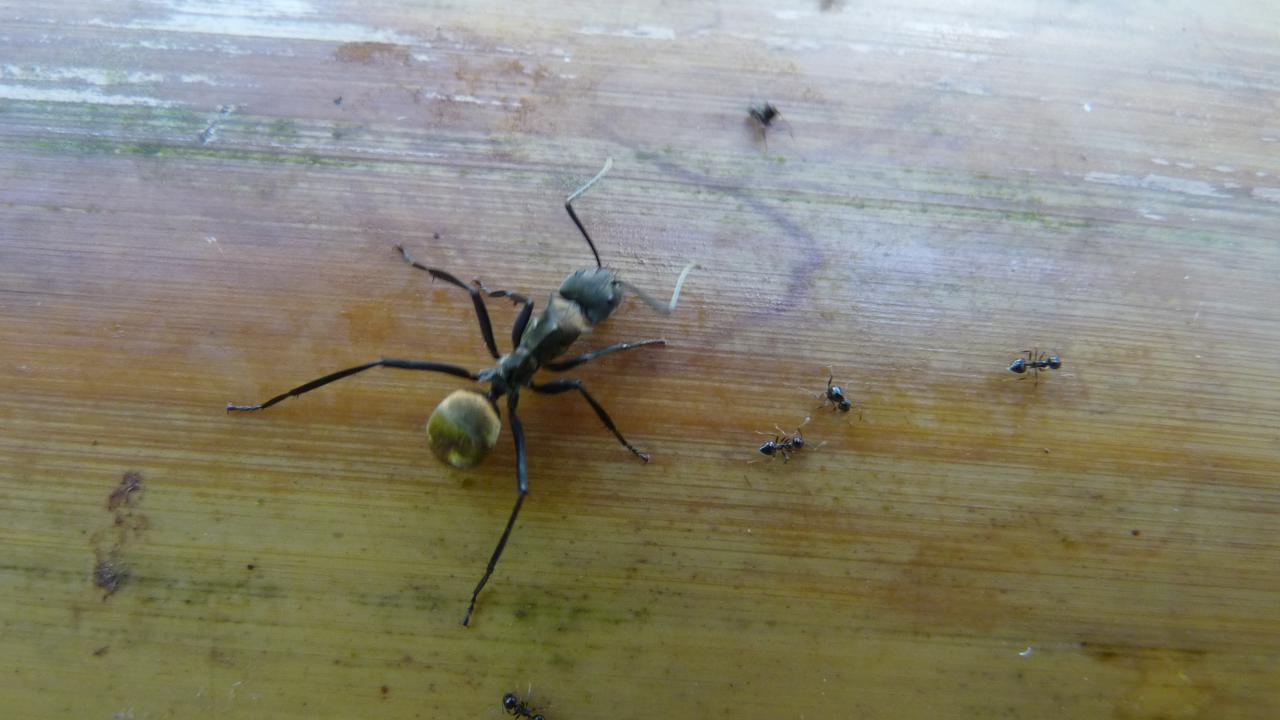Description:
Ants within the subfamily Dorylinae are nomadic ants, usually referred to as Army Ants.
The name Army Ant (or Legionary Ant or Marabunta) is applied to over 200 ant species, in different lineages, due to their aggressive predatory foraging groups, known as "raids", in which huge numbers of ants forage simultaneously over a certain area.
When the ants have eaten everything in the area, the colony moves on.
A swarm of Army Ants can kill up to 100,000 insects, spiders and even small mammals in a day.
Being nomadic, they make temporary nests as they travel.
The extraordinary thing is that the nest is made up of the army ants themselves.
They form walls and lock on to each other by using their mandibles (jaws) and their claws.
This way, they can hang from a log or another surface while the nest encloses the queen and her brood.
Unlike other ants, Army Ants do not have compound eyes, but instead have single eyes (but they are still blind).
Army Ants use their antennae to sense smell and touch.
Ants are the world’s most ecologically important insects, both in terms of biomass and diversity of ecosystem services.
About 15,000 species inhabit almost all terrestrial habitats, including deserts and high mountains.
Ants are social insects characterised by a highly sophisticated division of labour: different individuals carry out different functions.
Reserva Ecologica Taricaya, Puerto Maldonado, Peru, 16 June 2009


